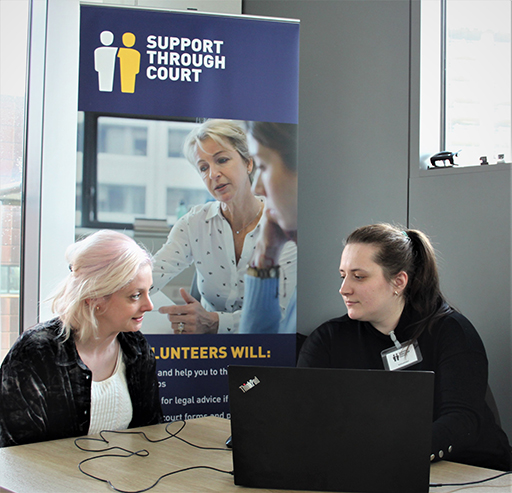7.3 What can you do and not do to support a client with their statement?
Support Through Court volunteers often are asked to help a client draft their witness statement, so it important to understand what you can and cannot do in relation to this. The responsibility for the witness statement and its content is with the client, so the statement must contain what the client wants to tell the court. The volunteer should not suggest specific details of what should (or should not) be in the statement.
Your role is to explain what the statement is, what general types of information the court wants to be included in the statement, to offer support in how the statement is set out and – sometimes - to offer help in typing or writing the statement (if needed).
Activity 2
Below is a list of things a volunteer can and cannot do when offering support with drafting a witness statement. Please use the green highlighter for things you can do or and red for the things you cannot do.
How to use the highlighter
Click on the colour you want to use and then drag your cursor over the text you want to highlight. The return arrow icon erases the single last highlighting you did. If you want to clear all of your highlighting use the Reset button. When you have completed all of your highlighting click on the Save button. To check your answers click on Reveal answer.
In terms of what a volunteer can do, the following additional information may be helpful:
- Empower clients by giving them choice. For example, by asking if they want to write their own statement with some guidance from the volunteer and then we can type it for them if they are unable to do it for themselves.
- Help calm the situation and language. For example: the client may be being asked to respond to allegations. The temptation may be to become defensive and focus on the author of the statement’s behaviour and not the issues.
- Help clarify what is most relevant to say in what order. For example, a judge may direct a client to answer specific points.
- Help with presenting information clearly. For example, explain that statements need to be set out in a prescribed format of numbered paragraphs.
- Help with typing. It is preferable for clients to type documents for themselves, so they own the wording and the activity. Many clients are very slow, however, and may struggle with English, so it may be impractical for them to do so. If you do type for the client, you must be careful not to dictate the language and always to encourage the client to tell you what to say. If you adjust for better English, stay as close as you can to the client’s words while writing something that can be understood by whoever will read the statement.
In terms of what a volunteer cannot do, the following additional information may be helpful. Volunteers should not:
- Give legal advice. This is a
regulated activity only to be provided by trained and qualified professionals. For example, we should not tell a client what they should or should not include in their statement. We can explain the procedures; for example, you could explain that a position statement is to explain to the court what you are asking the court to do and the reasons for the application. - Give personal email addresses for sending draft statements to the client. We don’t work on behalf of clients without them being present and we don’t share personal e-mail addresses for security reasons.
- Keep copies of client’s statements on office computers. We don’t manage cases on an ongoing basis; clients must take responsibility for their own documents; and we mustn’t risk anyone else reading a client’s paperwork.
- Send statements to the court or other party on their behalf. Clients must manage their actions for themselves; we particularly don’t act on a client’s behalf without them present, as there could be problems if they later claimed we hadn’t done what they wanted.
Activity 3
Do you think a volunteer can do the following to help a client in writing their statement?
a.
Yes
b.
No
The correct answer is a.
Answer
The answer is yes; this is helping them to present their information clearly
a.
Yes
b.
No
The correct answer is a.
Answer
The answer is yes; this is help clarifying what is most relevant to say and the correct format to do it in
a.
Yes
b.
No
The correct answer is b.
Answer
The answer is no; this is legal advice as you are suggesting what should specifically be in the statement. This is beyond the remit of Support Through Court.
a.
Yes
b.
No
The correct answer is a.
Answer
The answer is yes; You are not offering legal advice but signposting the client to other places which may be able to offer that legal advice. For further information on signposting, please go to the Signposting module.
a.
Yes
b.
No
The correct answer is b.
Answer
The answer is no; this is legal advice as you are suggesting what should specifically be in the statement. This is beyond the remit of Support Through Court.
7.2 What are statements?

